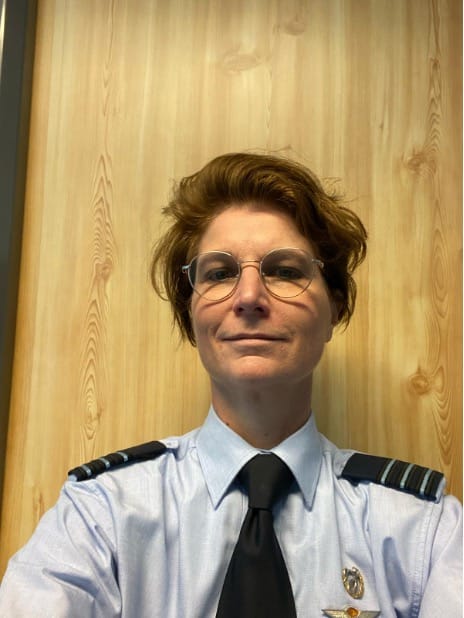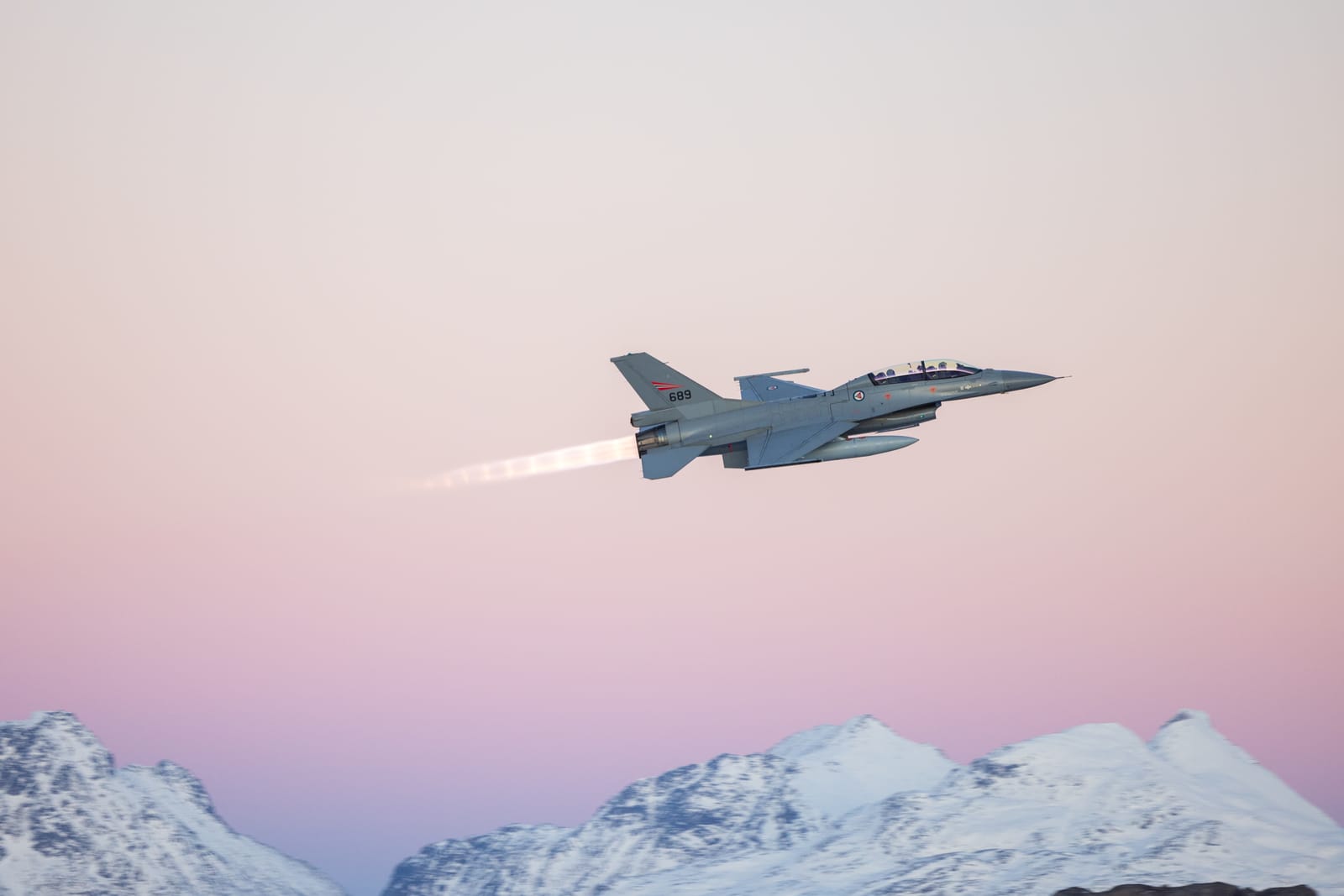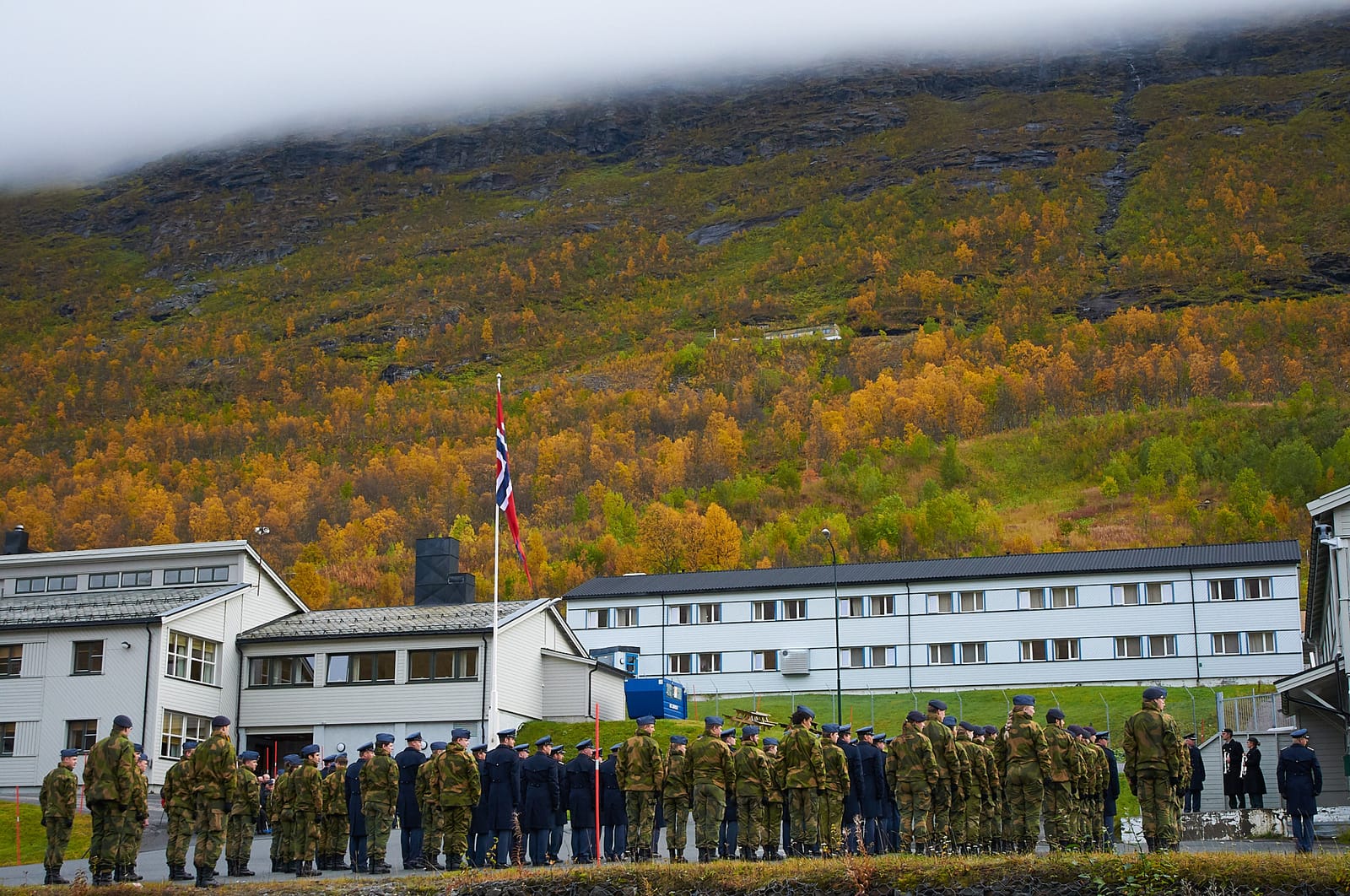The strategic location of the Netherlands provides the Dutch society with a rationale to cooperate in a military and security sense with countries in the north and northwest of Europe, and with Norway specifically. There are several geographic reasons for this, which we want to address in this article. Our aim with this article is to provide in this way a better comprehension on the collaboration between the Royal Netherlands and Norwegian Air Force. We will do this with a focus on some geographical features that we think connect Norway and The Netherlands as natural partners in a military and security context. From there, we will address how this has worked out in a collaboration between the two states in the past, as well as how this geographic connection works out in the context of the current geopolitical developments in Europe.
Geographic inspiration for natural partnership
According to the theory of strategic culture, national strategies and approaches to warfare are, to a significant extent, culturally determined.[1] One important aspect from which a national culture emerges is a state’s geography. Military strategy in fact appears to depend on geography to a far greater extent than what is currently practiced or taught.[2] Unique geographic characteristics of a state thus shape its national military decision-making. It may even function as a driver for military cooperation between states, as it provides them with similarities in their strategic interests. States cooperating with each other on this basis (or on the basis of any other cultural aspect) can be considered natural partners.
The Netherlands is strategically located at the heart of Northern Europe. It is bordering the North Sea and lies, from an air power perspective, not too far away from the northern flank of Europe. It considers itself as strongly connected to the Arctic region, from a historical point of view (e.g. with Willem Barentsz, who started in 1549 the first of three expeditions in search of the Northern passage), but also because the effects of global warming in this region have direct consequences for The Netherlands.[3] Although the Dutch and the Norwegian people connect as natural partners for many different cultural reasons, focus in this paper is on this geographical dimension as a binding feature.
With its waterways and other well-organized infrastructure, the Netherlands forms a valuable point for the entry and exit of military forces, logistics and internet traffic. Because of this, it has the collective responsibility to protect these assets, which includes defending against any attempt to breach the integrity of the Netherlands via the North Sea. What adds to this is a growing dependence on maritime infrastructure for communication cables and wind energy. It is of no surprise therefore, that the Dutch Maritime Strategy 2015 – 2025 indicates the freedom of movement of so-called 'Sea Lines of Communication' (SLOCs) as a primary interest, which may be supported by air assets in the form of helicopters and F-35 fighter aircraft.[4] Although the Dutch forces have the reputation to be a highly trained, respected and modern force that adheres to high standards and operates high-tech equipment, it nevertheless remains, in a numerical sense, a small nation when its military is considered.[5], [6] To assure the protection of the North Sea region, it therefore needs to forge allies. Defending the North Sea region is not just in the interest of the Netherlands though. Part of the North Sea, for instance, has been designated as a Dutch Exclusive Economic Zone (EEZ) in 1999.[7] While the Royal Netherlands Navy's primary task is to protect economic security by contributing to deterrence, prevention or combating threats (use of force), this EEZ borders those of Great Britain and Germany, but is also close to those of Norway and Denmark. A safe North Sea is therefore in the economic interest of all these states.
A second geographic reason for the Norwegian and Dutch air forces to partner as natural partners concerns the proximity, and threat, of Russia to Europe’s northern flank. From a naval and air perspective, this northern flank can be seen as the entrance to Europe's backyard. For example, show of force of Russian long-range aviation power often takes place by means of flights around Norway to the North Sea and back. These kinds of posturing activities, in which lies an eminent threat, definitely connects the northern European states, including those that can be reached in this way via Europe’s backyard. Within NATO, the states have each set up a(n) (aerial) quick reaction alert (QRA) as a means to defend the airspace. The northern European ones, including Norway and The Netherlands, perform this task these days collectively. What this means is that they closely operate and coordinate with each other on the QRA air surveillance task, and that they even hand over threats to each other when necessary.
A third geographic feature that connects Norway and the Netherlands, in a military and security sense, is their distance to the Arctic region. Norway borders the region and is a member, as such, of the Arctic Council. The Netherlands does not border the Arctic region directly, but considers itself near-arctic and has an interest in the region. This has been recognized and because of this, The Netherlands has an Observer status in the Arctic Council since 1998.[8] Moreover, these interests are described in the latest version of The Netherlands’ Polar Strategy 2021-2025 that sets out the Dutch government’s intent to contribute to the protection, in the Polar region, of human interests, the environment, and international security and stability.[9]
The Dutch and the Norwegians, in short, connect to each other, in large part because they have geographically instigated strategic interests in common. The remainder of this article will address how the Air Forces of the two states tend to find each other as natural partners because of this, in the past, as well as in the context of the current geopolitical situation in Europe.
The Norwegian and Dutch Air Force: a historical overview of their partnership
The Dutch 320 Squadron was the first foreign unit in the Royal Air Force. It was deployed from June 1, 1940. The missions that 320 Squadron conducted within the RAF were anti-submarine patrols, convoy surveillance, and attacking enemy ships in the coastal waters of Norway and the Netherlands. So, even before the establishment of an independent Royal Netherlands Air Force in 1953, Dutch pilots were flying missions in northern Europe. Conversely, Norwegian pilots within the RAF carried out missions over the Netherlands during the Battle of Walcheren and the liberation of the south of the Netherlands in 1944.[10]
A more constructive cooperation between states in the region was given a boost by the establishment of NATO in 1949. Mentioned in this must be the participation of the Dutch 314 'Redskins' squadron in the NATO Allied Command Europe (ACE) Mobile Force (AMF), which was an elite force according to Norman Dodd.[11] It was stationed, as part of the AMF, at Rygge Air Base in Norway from 1959. They first flew with F-84F Thunderstreaks, since 1972 with NF-5s. The aim of the AMF was to protect the northern flanks of NATO territory by deterring a possible attack and carrying out missions such as air defense, close air support, air interdiction, reconnaissance and possibly support of the battle at sea.[12]
The participation in the AMF was in fact the main reason for the intense military cooperation between the Royal Norwegian and Netherlands Air Forces during that time. Many exercises north of the Arctic Circle were flown from 'deployment base' Bodø from 1961 onwards. Moreover, the Dutch took part on winter survival exercises and big exercises like Strong Express, in which 64,000 soldiers, 700 aircraft and 300 ships took part.[13] During the Cold War, multinational cooperation was substantiated within NATO. The friendly and collegial cooperation between the Dutch and the Norwegian pilots went without problems, as became apparent during so-called area familiarization flights and patrol missions along the North Cape.[14] This resulted in more coordination efforts. Collaboration, for instance, was sought in education and training. It led to agreements between the two countries, laid down in Memorandums of Understanding (MOUs). These MOUs contributed to ensuring that the core task of NATO's Article 5, namely territorial defense, can be carried out by maintaining the so-called Nordic balance in the context of great power competition.[15] In 1988, the permanent presence of the Dutch Air Force in Norway came to an end. The replacement of the NF-5 by the F-16, but especially the end of the Cold War, put an end to the need for a permanent presence of the Royal Netherlands Air Force in Norway. The final exercise that was run in this context was the NATO Exercise Arrowhead Express in 1988. But that did not mean that the ties between the two countries disappeared.
After the Cold War, NATO defense efforts became less 'static' and the need for flexible and expeditionary forces for out-of-area-operations became a priority. Strategic and military-strategic reasons for fixed collaborations with other countries in a military or security sense diminished, especially after the Berlin wall came down in 1989. Some of the collaborations that had started during the Cold War nevertheless continued. Initiatives like the European Participating Air Forces (EPAF; Belgium, Denmark, Norway, the Netherlands), for instance, had resulted in a strong collaboration between the Norwegian and the Dutch Air Force in 1974. This collaboration followed from their mutual participation in the F-16 Multinational Fighter Program from 1975, a program in which the participating countries agreed to work together on the procurement and production of the F-16 aircraft (comparable with the development of the F-35 today).[16] As a result, EPAF joined the Fighter Weapons Instructor Training (FWIT) and “Red Flag” exercise from 1984 (the Royal Norwegian Air Force joint a few years later because of budget problems).[17] Especially FWIT provided a continuous exchange of training philosophies, tactics, and weapon system improvements within the F-16A/B community. It could even be said that especially the FWIT kept the multinational cooperation alive. Other exercises, like Maple Flag in Canada and Frisian Flag in The Netherlands, also helped to continue to foster cooperation and interoperability of the participating air forces.
The real test for EPAF took place from 2002 when the EPAF Expeditionary Air Wing started to take part in operations over Afghanistan from Manas airbase, Kyrgyzstan. This was a unique, tri-national alliance (Royal Danish Air Force, Royal Netherlands Air Force and the Royal Norwegian Air Force) and part of the 376th Air Expeditionary Wing of the United States Air Force (USAF). This tri-national alliance contributed to the American-led Operation Enduring Freedom (OEF). It enabled small European countries to make an important contribution as a multinational squadron within a larger air campaign, which makes this “experiment” highly relevant for the current geopolitical context in which European countries may have to deploy with much less or no US presence. Van der Vegt, a historian of the Netherlands Institute for Military History (NIMH), reports that although the EPAF alliance on Manas was an experiment, it demonstrated ‘a prime “operational” example of effective small or middle power strategy to mitigate (combat) limitations in an asymmetrical multinational relationship vis-à-vis the United States’.[18] The collaborative efforts from the 70’s and 80’s had paid off. After a year of this first wartime deployment, EPAF had flown over 2000 sorties (The Netherlands 804, Denmark 743, Norway 488).[19] The experiment provided some important political, strategic, operational, and tactical lessons. The countries complemented each other on targeting capabilities especially. At the same time, activities regarding combat support, such as maintenance and communication systems, were regarded more effective when operating as an individual air force.[20] Van der Vegt furthermore pointed at several differences in culture, language, customs, working methods, different rotations of personnel, and other examples that had to be overcome. Van der Vegt’s overall conclusion though, is that this first empirical experiment was a success for EPAF to become [with such an alliance of small nations] a “top notch” unit.[21]
Natural military partnership: how does that work in the current geopolitical landscape?
It is not entirely correct, of course, to compare different historical periods. Nevertheless, after a period of expeditionary deployment, it is likely that the emphasis of Western forces is once again on the defense of NATO and EU territory, which regains the attention and need for cooperation between countries around the North Sea. The recent conflict in Ukraine and other rising threats against NATO territory makes us realize that we will shift from so called ‘wars of choice’ to a situation wherein European countries need to deal with a mindset according to ‘wars of necessity’.[22]
Not only the European Union describes this changing security environment in Europe in its Strategic Compass, NATO too reacted on this threat on NATO’s territory with its 2022 Strategic Concept. Called out for NATO in this Strategic Concept are the need for collective defence based on deterrence and defence; crisis prevention and management; and cooperative security.[23] Both the Netherlands and Norway are too small to carry out the tasks that they have independently. This will and must be done within a NATO context, or at least in a bilateral or multinational context with other countries. The air capabilities of the Scandinavian countries together sum up to 250 combat aircraft, including 143 F-35s within a few years.[24] That seems a lot but the countries must pay attention not only to threats from the northern region, but also from the Baltic region.
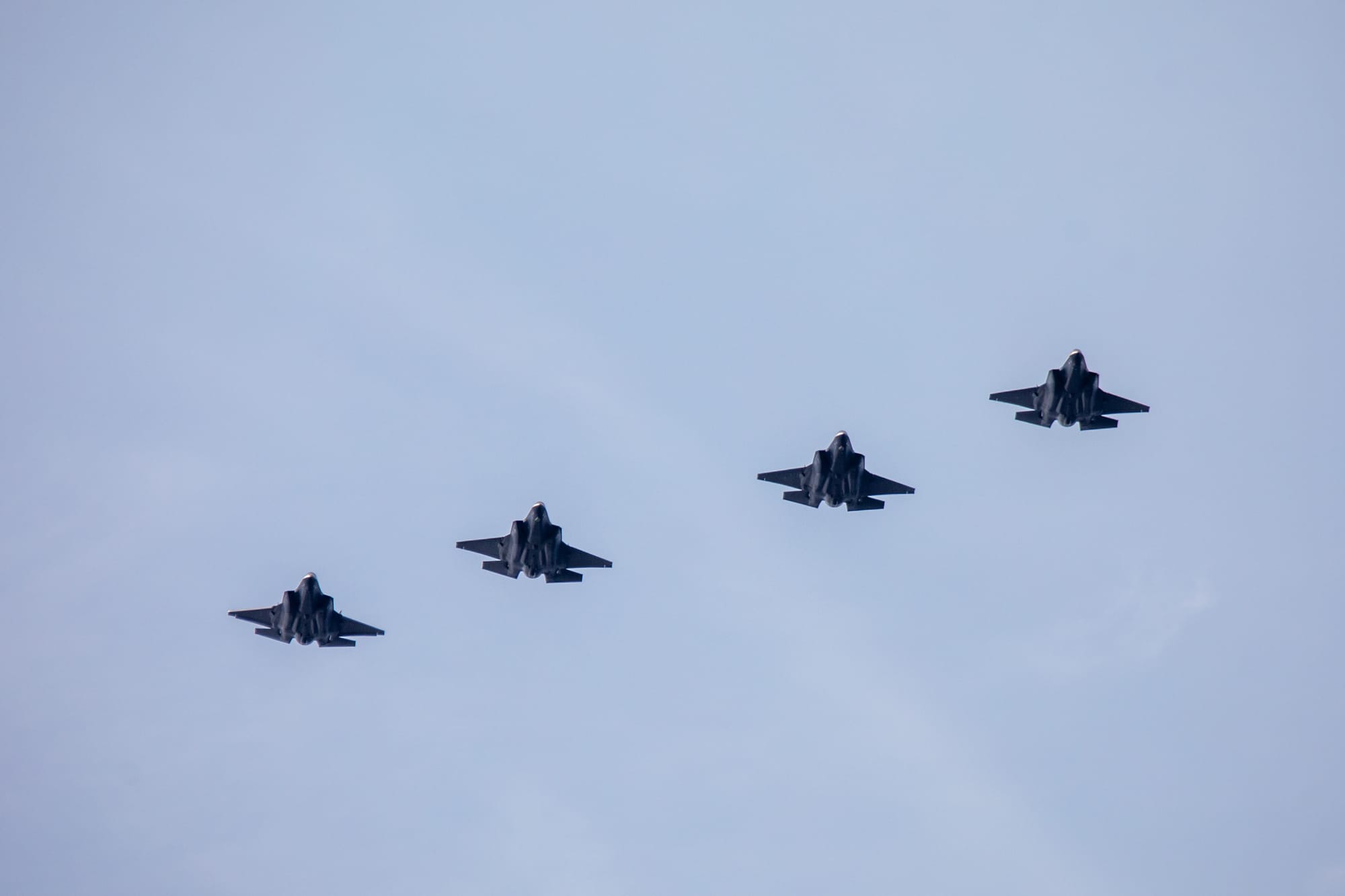
During the recent NATO Summit in 2023 in Vilnius, NATO Secretary General Jens Stoltenberg explained, in response to the war in Ukraine and the implications that this has for the European continent, NATO's revised position and posture when it comes to the defense of NATO territory. The central concept of the alliance, deterrence and defense[25], has not changed. However, the way in which NATO and its members are going to fulfil this task has. NATO’s revised posture strategy takes a regional approach, which means that NATO troops are allocated to a specific region. For this strategy, Europe is divided into three regions: 1) a northern region, which includes the Atlantic and European Arctic; 2) a central region, which includes the Baltic region and central Europe; 3) a southern region, which includes the Mediterranean and the Black Sea.[26] To fulfil the deter and defend task in these regions effectively, more NATO troops than ever will be allocated, which includes a fair share of air power resources. The allocated troops are to develop their regional operational concept together within the overall NATO political and military strategic objectives.
The regional approach within the revised NATO strategy requires a renewed commitment to intense cooperation between the Norwegian and the Royal Netherland Air Forces. One of the operational challenges for NATO is the Anti-Access/Area Denial (A2/AD) problem in the High North and the Baltics. This A2/AD challenge is particularly pronounced, as Russia has fortified its military presence in the North, both in the Arctic and in the Baltics, by deploying advanced anti-ship missiles, long-range aviation assets, and integrated air defense systems. This mixture of assets creates a formidable barrier for NATO forces attempting to operate in the region. However, based on their earlier experiences as natural partners, The Royal Netherlands and Norwegian Air Forces should be able to create, like with the EPAF alliance, sufficient interoperability regarding the suppression of enemy air defences, airborne electronic warfare, anti-submarine warfare, and air superiority, to counter the A2/AD challenges.[27] With mutual regional planning, training, and logistics, they should be able to counter this threat together with the other northern European countries, and to guarantee in this way, NATO's freedom of movement in the region.
Norway, like the Netherlands, will seek more cooperation with the Atlantic-oriented countries that fall under Joint Forces Command Norfolk.[28] It will also form alliances sec with the other Northern European countries. Long before the recent changes in the military-political situation in Europe, in 2009 already, Denmark, Finland, Iceland, Norway, and Sweden formed the Nordic Defence Cooperation (NORDEFCO), an alliance on security and defense.[29] Minna Ålander of the Finnish Institute of International Affairs now advocates a strengthening of this kind of cooperation with more strategic cohesion, better operational integration, and a command structure that is specifically focused on the northern region of NATO.[30] In line with this call for a strengthened cooperation, the air forces of Norway, Denmark, Sweden, and Finland signed a letter of intent in March 2023 to develop a Nordic air operations concept based on four focus areas: integrated command and control, operations planning and execution; flexible and resilient joint deployment of the air forces; shared situational awareness and airspace surveillance; and joint training and exercises. With the upcoming membership of NATO of Finland and Sweden especially, it would be legitimate to consider, in this context, to install a regional combined air operations center for the northern region specifically.
The Royal Netherland Air Force has to respond to this. Regional alliances in the northern part of Europe can be of value for the Netherlands too. In 2009 already, the Clingendael Institute called for The Netherlands to join in with the initiatives of the Nordic countries.[31] Both geographic and historical military reasons form the rationale for the allocation of Dutch airpower and troops in the northern region of NATO territory. Would it be possible in this sense, to benefit from old bonds? The answer is yes. The navy and air force especially would have the important task there to help protect the entrance to Europe’s backyard. This is all the more important when the technical advance of the past decennia is taken into consideration regarding ballistic and other missile threats. These threats have gained weight significantly as missiles today go further, faster, and are much more difficult to detect and track than the older ones. There is no such thing anymore, in this regard, as a main bearing to calculate with. All the European countries nowadays have in fact to take a 360-degree approach for their missile defense, which includes for the Netherlands, the European back door from the north. Collaboration with the Scandinavian countries in this, among which Norway, is of vital importance for the Netherlands. The historical experiences of the past, in which the long-during and intensive EPAF collaborative efforts actually paid off in a smooth alliance in Afghanistan later on, tells us that collaborative training efforts, agreements for host nation support between countries, and more joint education can safeguard the conceptual component of combat power at the operational level of warfare; operational art if you like. In concrete terms, the Netherlands will have to seek cooperation to effectively contribute to the air campaigning capacity in the northern region. Several initiatives can be identified.
The Joint Expeditionary Force (JEF), for instance, of which Norway and the Netherlands are members and which is led by the UK, forms a growing security network in conjunction with the Northern Group. The collaboration between these two groups includes the regular meeting of their attended defense ministers. Norway and The Netherlands also bond with each other in a maritime sense. Both countries participate with their maritime airpower and with their airpower in support of maritime operations in the Standing NATO Maritime Group 1 for tasks in the Atlantic Ocean and the northern flank. They also are the initiators and contributors to the Very High Readiness Joint Task Force (VJTF), and contributors as well to the Initial Follow-On Forces Group (IFFG). Moreover, Norway has joined the multirole tanker project (MRTT), a NATO aircraft pool of tanker and transport aircraft with its planning capacity, including Norwegian personnel, at the European Air Transport Command in Eindhoven. Another example is that Norway, like the Netherlands, has been a partner in the F-35 project right from the start of the development of this 5th generation aircraft. Within this F35 project, Norway and the Netherlands are leading the development of weapons instruction in the Weapons Instructor Course (FWIT) for the European F-35 community. As of 2024 this course does not only instruct pilots, but also Dutch and Norwegian intelligence staff, fighter controllers, and air defence personnel. One of the latest collaborative high-tech initiatives in which both Norway and The Netherlands have been involved is the bi-lateral cooperation in the space domain. A Norwegian satellite was launched with Dutch laser communication equipment. This SmallCAT (Small Communication Active Terminal) project is an initiative to test the compact laser communication technology that may be used within NATO.[32] All these initiatives may result to the fact that Norway and the Netherlands will take the lead within the 5th generation countries in Europe and contribute to a strong force within NATO.
Apart from these institutional collaborations there is also this renaissance of large international exercises, which underpins the deterrence posture in the northern European region. One of these exercises is the Arctic Challenge Exercise (ACE), in which the Netherlands participated this year with twelve F-35s and eight F-16s. It was a large exercise in a 'unique airspace' according to the commander of 312 Squadron: Lt-Col Patrick 'Naish' Vreeburg.[33] Another example is the Dutch participation to the exercise Joint Viking in Norway, in which thousands of soldiers participated in an international wintertime exercise. During this exercise, an attack on Norway was countered by deploying helicopters, fighter jets, naval ships, submarines and many ground troops.[34] Of similar value is the international exercise Frisian Flag from Airbase Leeuwarden.
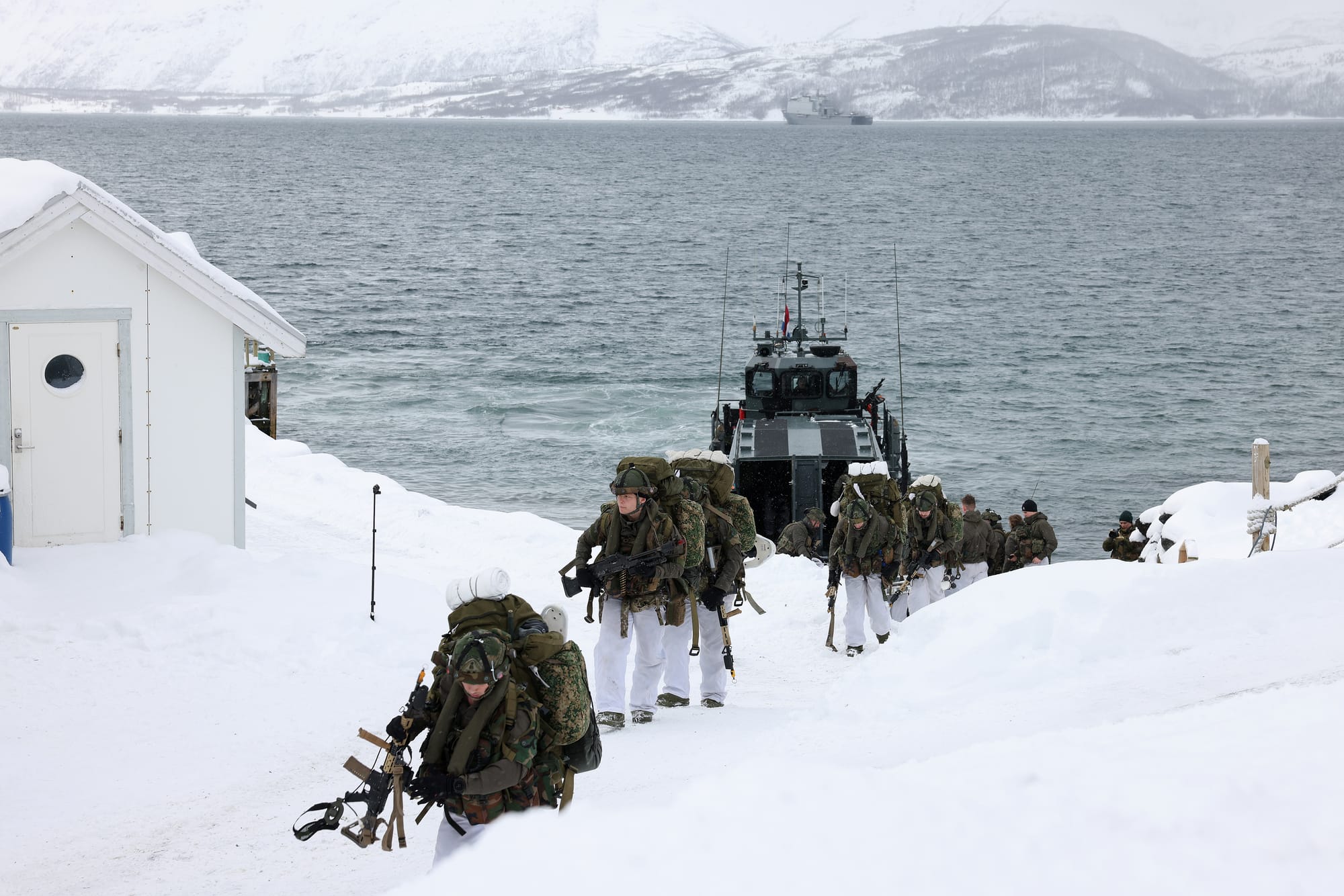
All these initiatives between the Royal Norwegian and the Royal Netherlands Air Force will no doubt contribute to the defending of the Northern region, both within and without the context of NATO. It will bond and strengthen the regional alliances once again, up until the level that they are top notch performing alliances, just like AFM and EPAF did in the past.
Conclusions and way ahead
The Royal Netherlands and Norwegian Air Force share a past in which they have shown numerous times to be more than just military allies. They participated in many of the same collaborative programs and in many of the same exercises. We have suggested in this article that a main driver for this lies in the geographic location of both countries, because of which they share and will share similar military-strategic interests. Additional reasons for this natural partnership lie in cultural similarities, and in the many occasions that the Dutch and the Norwegian forces operate with the same high-end technology. They even decided at times to set up training programs together, such as the FWIT, and the WIC today.
For good reasons, the Scandinavian states strongly connect together these days in a military and national security sense. The Royal Netherlands Air Force aims to join these efforts, and will participate in at least some of these programs. We believe it is of high importance to strengthen the alliance with Norway and the Scandinavian partners. Our history of being close partners for so many decades in different respects has resulted in the two Air Forces being attuned to each other, with shared standards, shared technology, shared knowledge, and a shared mindset. The two Air Forces would not be as closely attuned as they are these days if they had not so often operated the same high-end technology and collaborated, in the past, in many operational, logistic, and educational programs regarding that technology.
The Dutch-Norwegian connection is, we believe, key to providing air power as allies that can make a difference in the region, especially when it is taken in mind that both countries operate with the F-35 5th generation fighter aircraft. As a result, the Royal Netherlands Air Force is investigating the possibilities to set-up a (semi-)permanent Forward Operating Base for our F-35s in Norway. This must lead, once again, to a high integration of the two Air Forces, and to a credible forward posture of airpower. We are sure it will lead to a cohesive alliance that is well-trained and interoperable, and able to effectively counter the threat in the Arctic and North-Sea region in the case the geopolitical situation shifts past the deterrence phase.
FOOTER
[1] See for more: Sondhaus, L. (2006). Strategic Culture and Ways of War (Routledge).
[2] Bruscino, Thomas. (2020). ‘Military Geography and military strategy.’ War Room, November 12, 2020. https://warroom.armywarcollege.edu/articles/geography-and-strategy/; See also: Marshall, Tim. (2016). Prisoners of Geography : Ten Maps That Explain Everything About the World (First Scribner paperback ed. New York, NY: Scribner) and Simon and Schuster and Gray, C.S.; Sloan, G. (2014). Geopolitics, Geography, and Strategy (Routledge).
[3] Interview with observers published in ‘Arctic Council’. (2020). 10 August 2020. Available at https://arctic-council.org/news/interview-with-arctic-council-observer-the-netherlands/
[4] Ministry of Infrastructure and Water Management. Report ‘Maritime Strategy 2015 – 2025’ (2015). See for the report: https://www.government.nl/documents/reports/2015/07/07/the-dutch-maritime-strategy-2015-2025
[5] Wiberg, H. (1987). ‘Small Nations’ Strategies’ in: Sakamoto, Yoshikazu. (1987). Strategic Doctrines and Their Alternatives. (New York). ‘Small nations’, according to Wiberg, can be regarded as such for two reasons. The first has to do with indicators of size. The second reason refers to the amount of influence a nation has. Small nations have little influence on their environment, or are highly influenced by that environment.
[6] The Netherlands in facts ranks in the 2023 Military Strength Ranking 35 of 145. Norway is ranked 35. Available via: https://www.globalfirepower.com/countries-listing.php
[7] Kingdom Act of 27 May 1999 establishing an exclusive economic zone of the Kingdom (Trans.). Available in Dutch https://wetten.overheid.nl/BWBR0010480/2023-01-01
[8] See for The Dutch interests: Interview with observers published in ‘Arctic Council’. (2020). 10 August 2020. Available at https://arctic-council.org/news/interview-with-arctic-council-observer-the-netherlands/
[9] The Ministry of Foreign Affairs. (2021) ‘The Netherlands’ Polar Strategy 2021-2025’. February 2021. Available via: https://www.government.nl/binaries/government/documenten/publications/2021/03/01/polar-strategy/The+Netherlands+Polar+Strategy+2021-2025.pdf
[10] Schraven. Martijn. 2023. ‘Oosterhouts eerbetoon aan Noors Spitfire-piloot.’ De Stem, 03-05-16, 19:57. https://www.bndestem.nl/oosterhout/oosterhouts-eerbetoon-aan-noors-spitfire-piloot~a01719a8/?referrer=https%3A%2F%2Fwww.google.com%2F See for the video of the ceremony: https://www.youtube.com/watch?v=S9PAKVt1LGs
[11] Col (Ret.) UK Army Dodd. Norman L. (1976). ‘Allied Command Europe Mobile Force, an elite force’, in: Militaire Spectator, 145, nr. 5, May 1976. 225-231. See for a digital version of this magazine: https://militairespectator.nl/sites/default/files/bestanden/uitgaven/MS%201976-05.pdf
[12] LCol (Ret). Dekker. P. ‘Redskins boven de Poolcirkel’. (2018), in: Carré, (Nov) Vol. 41, No. 6 (2018), P. 22-24. See: https://nederlandseofficierenvereniging.nl/redskins-boven-de-poolcirkel/
[13] Utgård, Per I. (1995). Bodø Hovedflystasjon 1945–1995 (in Norwegian) 106. See also: Col (Ret.) UK Army Dodd. Norman L. (1976). ‘Allied Command Europe Mobile Force, an elite force’, in: Militaire Spectator, 145, nr. 5, May 1976. 225-231. See for a digital version of this magazine: https://militairespectator.nl/sites/default/files/bestanden/uitgaven/MS%201976-05.pdf
[14] Lt-Col (Ret) Guus de Koster (Former pilot of 314 sqn), email to author, October 24, 2023.
[15] Terry. J.G. (1988). ‘Factors affecting the military environment of North Norway: Its History’, in: International Relations, Physical Characteristics, and Balance of Military forces. (RAND). Available via: https://www.rand.org/content/dam/rand/pubs/notes/2009/N2497.pdf See for more discussion: Noreen, Erik. (1983). ‘The Nordic Balance: A Security Policy Concept in Theory and Practice.’. In: Cooperation and Conflict. 18 (1): 43–56.
[16] See for a complete story of the process leading to the development of the F-16 and collaboration between EPAF and the US: Lt-Col RNoAF Smedsvig. E.K. (1988). Incorporating five nations’ operational requirements into a single aircraft. The F-16 multinational fighter program viewed from an operational side. (Maxwell Air Force Base, Alabama)
[17] Lt-Col RNoAF Smedsvig. E.K. (1988). Incorporating five nations’ operational requirements into a single aircraft. The F-16 multinational fighter program viewed from an operational side. (Maxwell Air Force Base, Alabama) 31.
[18] See for a detailed article on the missions, experiences, debates and results from the nations’ perspectives involved: Vegt. Q. van der. (2021). ‘Joining Forces Over Afghanistan: The EPAF “Experiment’, in: Scandinavian Journal of Military Studies, 4(1), 232–243.DOI: https://doi.org/10.31374/sjms.101
[19] Marchand, A. (2003). ‘Alles behalve rustig’: Laatste KLu-detachement verlaat Kirgizië. In: Vliegende Hollander, 59 (10, 2003), 12–15.
[20] Anrig, C. F. (2011). The quest for relevant air power: Continental European responses to the air power challenges of the post-Cold War era. (Maxwell Air University Press) 235-236.
[21] A classification given by United States Air Force personnel at the Air Support Operations Centre in Bagram in 2013 when asked by the Canadian military historian Sean Maloney; cited in: Vegt. Q. van der. (2021). ‘Joining Forces Over Afghanistan: The EPAF “Experiment’, in: Scandina0vian Journal of Military Studies, 4(1), 232–243.DOI: https://doi.org/10.31374/sjms.101
[22] Boswinkel. Lotje and Sweijs. Tim. Wars to come, Europeans to act. A multimethod foresight study into Europe’s military future (The Hague Centre for Strategic Studies, October 2022) 57-58.
[23] NATO 2022 Strategic Concept (Last updated: 03 Mar. 2023 13:30). Available via https://www.nato.int/cps/en/natohq/topics_210907.htm
[24] Ålander. Minna (2023). ‘NATO’s New Northern Flank - Don’t Ruin It’. (July 20, 2023). Available at: https://cepa.org/article/natos-new-northern-flank-dont-ruin-it/
[25] Of which the primary goal is to withhold by deterrence, any possible opponent from even considering an attack on NATO property, in any of the five military domains (land, air, water, cyber, space)
[26] Secretary General Jens Stoltenberg. Pre-Summit press conference ahead of the NATO Summit in Vilnius 07 July 2023. Available via: https://www.nato.int/cps/en/natohq/216939.htm?selectedLocale=en
[27] See for example: Lasconjarias, Guillaume and Alessandro Marrone. (2016). Conference Report 01/2016: "How to Respond to Anti-Access/Area Denial (A2/AD)? Towards a NATO Counter-A2/AD Strategy. February 2016. Another example: Grygiel, J., & Mitchell, A. (2016). Unquiet Frontier: NATO and Russia Face the New Cold War. (Princeton University Press)
[28] Bye, Hilde-Gunn. ‘With All the Nordic Countries in NATO, the Region Will Have a Formidable Air Force’. Published: Dec 08 2022 - 15:42. Available at: https://www.highnorthnews.com/en/all-nordic-countries-nato-region-will-have-formidable-air-force
[29] Dahl, Ann-Sofie (2021). ‘Back to the Future: Nordefco's First Decade and Prospects for the Next’, in: Scandinavian Journal of Military Studies. 4 (1): 172–182. doi:10.31374/sjms.85
[30] Ålander. Minna (2023). ‘NATO’s New Northern Flank - Don’t Ruin It’. (July 20, 2023). Available at: https://cepa.org/article/natos-new-northern-flank-dont-ruin-it/ . See also: Bye, Hilde-Gunn. ‘With All the Nordic Countries in NATO, the Region Will Have a Formidable Air Force’. Published: Dec 08 2022 - 15:42. Available at: https://www.highnorthnews.com/en/all-nordic-countries-nato-region-will-have-formidable-air-force
[31] Bakker, Gerben. (2023). ‘De ‘Nordics’ zijn relevanter dan ooit voor Europa’. 23 march 2023. Available at: https://www.ewmagazine.nl/ewpodium/opinie/2023/03/de-nordics-zijn-relevanter-dan-ooit-voor-europa-927879/ and Dams, Ties and Schaik, Louise van. (2019). ‘The Arctic Elephant: Europe & geopolitics of the high north’. Published 14 Nov 2019 - 15:02. Available at: https://www.clingendael.org/publication/arctic-elephant-europe-geopolitics-high-north
[32] Dutch Ministry of Defence. (2023). “Noorse satelliet met Nederlandse lasercommunicatie gelanceerd”. Newspage 17 April 2023. available at https://www.defensie.nl/actueel/nieuws/2023/04/17/noorse-satelliet-met-nederlandse-lasercommunicatie-gelanceerd
[33] Captain RNlAF Jessica Bode. (2023). ‘F-16 en F-35 aan zet in Hoge Noorden’. De Vliegende Hollander. Nr. 6. 27 June 2023. Available in Dutch: https://magazines.defensie.nl/vliegendehollander/2023/06/01_f-16-en-f-35-aan-zet-in-hoge-noorden
[34] Dutch Ministry of Defence. (2023). “Mariniers slaan in Noorse sneeuw aanval van buurland af”. Newspage 17 March 2023. Available at: https://www.defensie.nl/actueel/nieuws/2023/03/17/mariniers-slaan-in-noorse-sneeuw-aanval-van-buurland-af See also: Article and information about Joint Viking 2023. Updated: 6. Mar 2023 19:58. Via: https://www.forsvaret.no/en/exercises-and-operations/exercises/jv23
Photo: A Boeing CH-47 Chinhook helicopter from Royal Netherlands Air Force loading troops and small vehicles during exercise Nobel Ledger 2014 in Norway/ Torbjørn Kjosvold / Forsvaret

